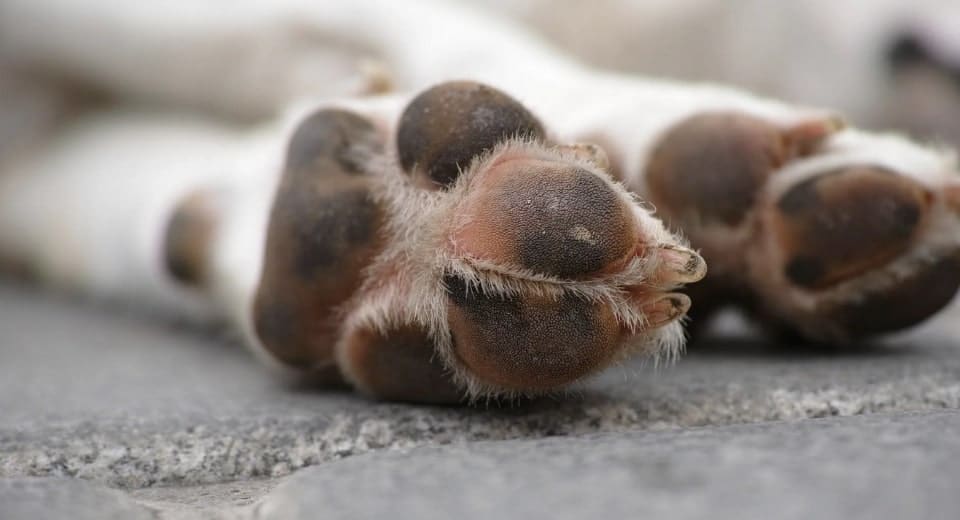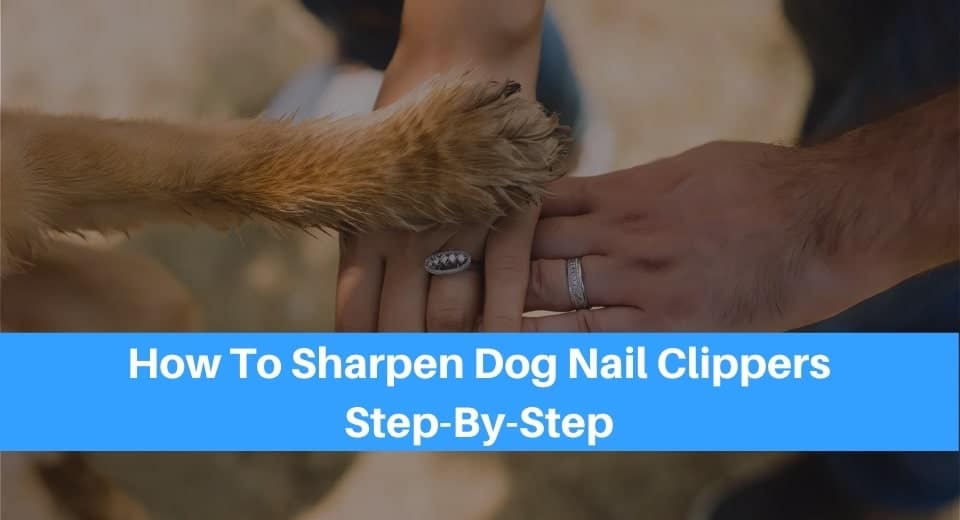Just like human nail scissors or recreational scissors, the blades get dull over time. Instead of going out and purchasing a whole new pair, there are a few things you can do to keep them sharp and on point. Having sharp dog nail clippers make your job easier, and it’s also safer for your dog. The sharp blades allow for more precision and accuracy, decreasing the chances of you cutting into the quick. Read on to find out how you can sharpen the blades on dog nail clippers on your own.
How To Sharpen Dog Nail Clippers: A Step-by-Step Guide
Procedure
- The first step is to disassemble the nail clippers. They operate with an actuating lever design, which needs to be dismantled first. Depending on which type of dog nail trimmers you use, there are different ways to take them apart. You need to do this slowly and take the blades off.
- Next, you need to make sure the blades are clean. After prolonged usage, bits of stray hair, dead skin and dust can accumulate. Use cleaning oil (if the clippers come with it), or even a small amount of baby oil will do the trick.
- After you have successfully cleaned off the blades, you can get to sharpening. Some tools you need to get to complete this task are: a grinding stone, a ceramic rod, a diamond tapered rod or a basic sharpening stone. The easiest choices of the four are the grinding stone and the sharpening rod/stone.
- Hold the blade steadily at a 35 to 45-degree angle away from your body. Take the blade and slide it in swift motions across the surface of the rod or stone you have decided to use. Check the sharpness of the blade every so often, and once you are satisfied with the results, wipe away the residue with a damp cloth. Then do the same to the other side.
- When you are finished, reassemble the dog nail trimmers and wipe off any remaining residue. Lubricating the blades will ensure they work smoothly. You can do this by using the same oil you used to clean off the blades.
- The last step is to check how good of a job you did. Take one of your pup’s toes and take a snip at the nails. Are the blades working more efficiently? If not, try steps 1 through 5 again. If yes, then you did a great job!
Types of Dog Nail Clippers
We have briefly covered this topic on our “how to trim a dog’s nails” article. For this article, we will go into more depth.
Scissor
Scissor trimmers resemble scissors (hence the name). As the name also suggests, they function much like the scissors we are used to and have enough power to trim even the toughest and hardest of dog nails.
Guillotine
The guillotine-type adopt a retractable single blade that comes down when you squeeze the handles. You would need to regularly maintain the blade to make sure it’s sharp to do the job right. Due to the design, if your dog’s nails are too tough and hard, it might just crack or crush it without actually cutting it. Therefore, the guillotine design trimmers are better for softer nails on smaller dogs.
Rotary Sander (Grinder)
Also known as a nail grinder, this option is a spinning sander/grinder attached to a power tool that slowly grinds down your dog’s nails to the desired length. The disadvantage would be the noise (although some manufacturers claim to have a silent motor), and the vibrations could scare your dog. The parts of the rotary sander need to be replaced much more often than traditional nail clippers. We have compiled the best-reviewed dog nail grinders you can choose from.
Should I Replace My Nail Clippers?
Maintenance and upkeep only go so far if your clippers are too far from being salvaged. Without the proper tools and equipment, performing tasks that come so close to your dog’s sensitive areas could be dangerous. Given the price of a lot of these nail clippers, it wouldn’t cost you an arm and a leg to replace it from time to time.
Most nail clippers can be sharpened and this could extend its shelf-life. However, most things have an expiration date. Constantly check the edge of the blades. Do you see any wear and tear as well as chips and dents? If you do, there is little sharpening the blades can do. You will know it’s time to replace these tools when they no longer work, or look fragmented and worn out.
When it comes to replacing dog nail clippers, the rotary sander option could save you more money. Replacing the grinder parts could cost less, and after trimming with the traditional clippers, you may need to sand down your dog’s nails anyway.
Benefits of Sharpening Dog Nail Clippers
As mentioned above, sharpening dog nail clippers will give you more precision and lower the margin of error. It also gets the job done more quickly and at less risk of hurting your dog. You will be able to slice through the long nail in one swift motion without the chance of the blade slipping and overcutting.
It’s also important to keep the dog nail clippers clean to reduce the chance of infection. Check the condition of the blades regularly and sterilize the blades for sanitation.

Conclusion
A dog needs grooming, and this includes a mani-pedi. For those who do the job at home to save money, you need to take extra care of the tools you use. Check them consistently for wear and tear and don’t cut corners when finding the proper equipment for dog grooming. You get what you pay for, and don’t hold back when something needs replacing. If you are unable to do the job yourself, or can’t sedate your dog for nail clipping, taking them to a professional groomer is the responsible thing to do. They know which type of dog nail clippers to use with your dog and they should sharpen and sterilize their tools regularly for your dog’s safety.


